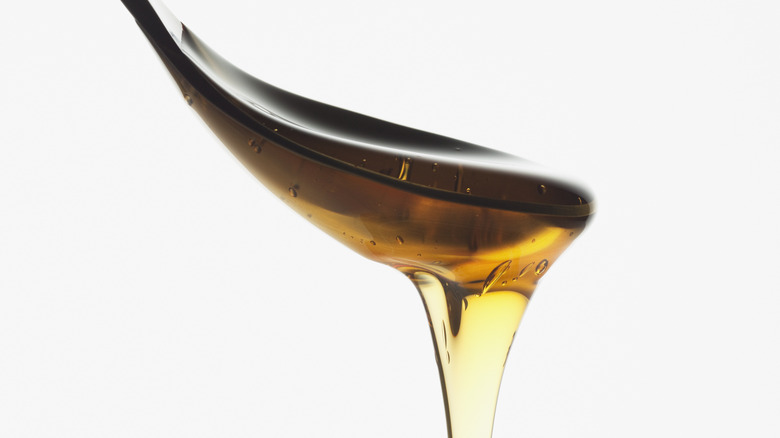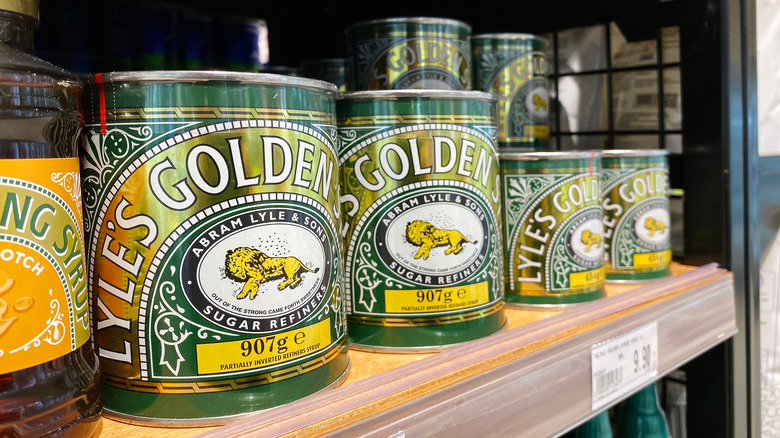The Origin Of The UK's Beloved Golden Syrup
We may receive a commission on purchases made from links.
British culinary stylings have gifted the world with such creative dishes as Beans on Toast, Shepherd's Pie, and beloved fish and chips (the self-professed go-to comfort food of Gordon Ramsay). If you've ever enjoyed a full English breakfast or eaten a Scotch egg as a bar snack, then you have the Brits to thank. Today, we're talking about one staple (yet perhaps lesser-known) British food product that you should know about: Golden syrup.
To make golden syrup, cane or beet sugar is inverted in water, meaning it is broken into its molecular bonds of glucose and fructose, explains Webstaurant Store. (Technically, per The Spruce Eats, golden syrup is the byproduct of the inversion process.) Then, a natural acid is stirred into the mix (commonly cream of tartar or lemon juice) to prevent the syrup from crystallizing and keep it spreadable. The result is a sweet syrup with a viscous, honey-like texture and characteristic golden-amber hue.
The BBC describes the taste as buttery and caramel-like with a touch of acidity. It packs a sweet kick as, according to the outlet, it imparts 25% more sweetness than granulated white sugar. Unlike bee-made honey, golden syrup is 100% indisputably vegan, and in a sealed container at room temperature, it has a shelf life of multiple years.
Sounds like something of a miracle product, right? So, where did it originally come from? Turns out folks have been enjoying it for over a century.
All that glitters may not be gold, but this syrup is
The history of Golden Syrup goes back to 1881, when Abram Lyle of the Glebe Sugar Refinery in Greenock invented a product called "Goldy." Allegedly, the creation was inspired by thrift, says The Spruce Eats.
Before the advent of Goldy, Lyle had been feeding the byproduct of his company's sugar refining to his pigs. He wanted to turn it into something that humans could also eat. With the help of John Joseph and chemist Charles Eastick, Lyle polished the recipe for golden syrup, and it went commercial during the mid-1880s. Today, Lyle's Golden Syrup continues to inhabit British pantries nationwide in an iconic green and gold tin with a lion logo, per Martha Stewart.
If you live in the U.K., you can find golden syrup in many grocery stores in a glass jar or squeeze bottle, similar to honey, says the BBC. If you live elsewhere, hit up any specialty store that sells European grocery items (like Myers of Keswick in NYC). For an even more convenient option, the English Tea Store is an online retailer of British foodstuffs.
Once you've secured your bottle of golden syrup, its uses are only limited by your imagination. In the U.K., it's commonly used to make traditional British treacle tarts and treacle sponges. British food blog The English Kitchen suggests using a little golden syrup as a sweetener for a bread pudding. You could pour it over pancakes or swirl it into your next yogurt parfait for a fun breakfast.

